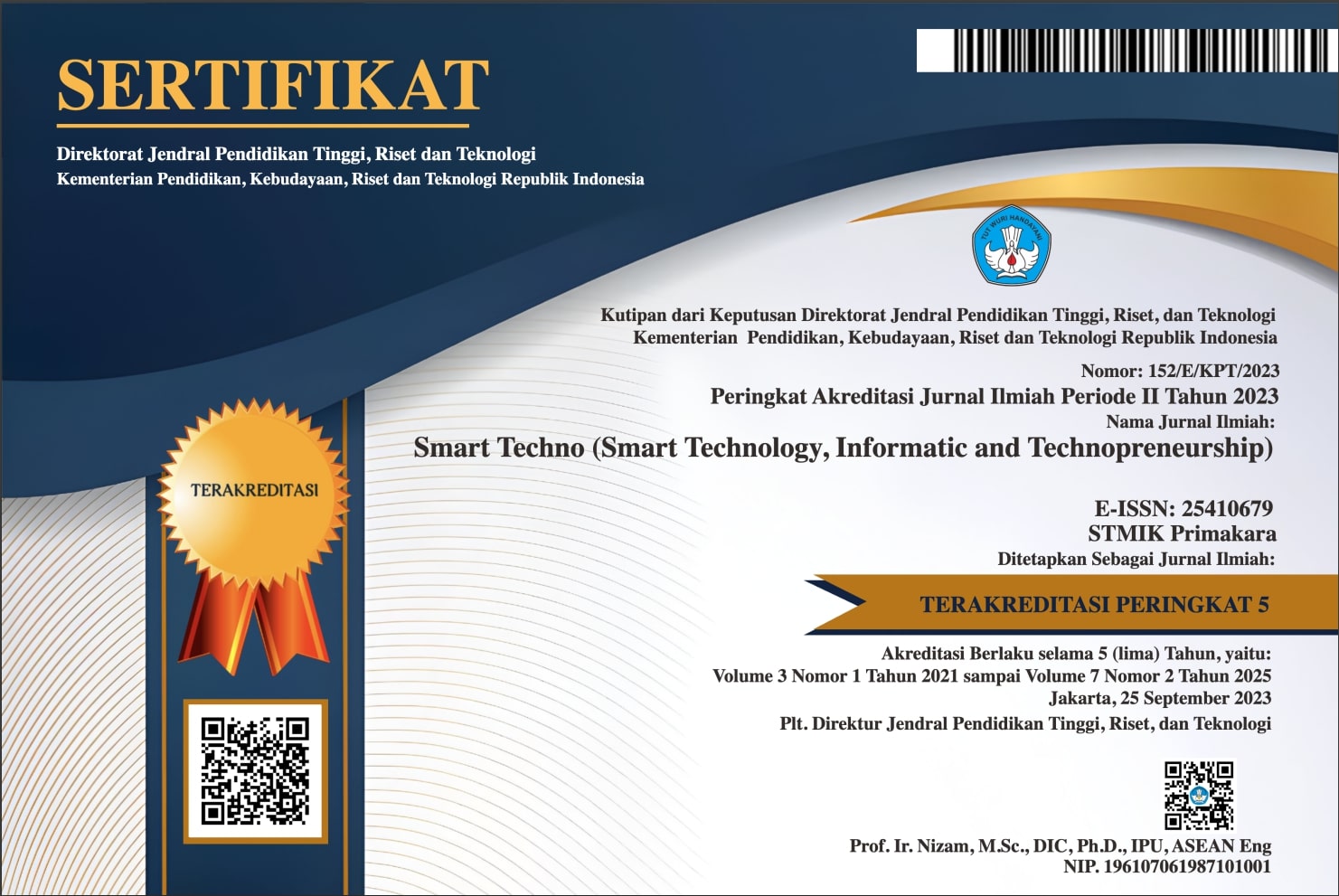Rancang Bangun Smart Sensor Television Berbasis Atmega32
Abstract
Watching television at close range can be bad for eye health such as nearsightedness (myopia). Watching television with a distance of less than 5 times the diagonal of the television can have adverse effects on the health of the eye lens such as nearsightedness, photochemical injuries, and astigmatism. Damage to the lens of the eye is caused by the blue light emitted by the television. Therefore, an ATMega32-based Smart Sensor Television Design Tool was created, which is an automatic television viewing distance detector as an effort to maintain eye health while watching television. In watching television, there are several rules that must be obeyed so that the bad effects of television blue light do not come to us. One of them is the distance of the television monitor screen to the eye must follow the applicable standard calculations. If the distance rules are violated, eye health can be threatened.
Downloads
References
Bishop, Owen. 2004. Dasar-dasar Elektronika. Alih bahasa : Irzam Harmein, Jakarta : Erlangga.
Budiharto, Widodo. 2004. Interfacing Komputer dan Mikrokontroller, Jakarta : Alex Media Komputindo
Faisal, 2013, Implementasi Sistem Penunjuk Arah Dan Pendeteksi Jarak Benda Untuk Tuna Netra Dengan Output Suara Berbasis Mikrokontroller ATMega32. Tugas Akhir Teknik Elektronika. Politeknik Negeri Lhokseumawe. Diakses tanggal 28-11-2014
Samuel, C.Lee. 1976. Rangkaian Digital Dan Rangkaian Analog. Alih bahasa : Sutisno. Jakarta : Erlangga
Copyright (c) 2019 Smart-Techno

This work is licensed under a Creative Commons Attribution 4.0 International License.
Authors who publish with the Smart Techno agree to the following terms:
- Authors retain copyright and grant the journal the right of first publication with the work simultaneously licensed under a Creative Commons Attribution License (CC BY-SA 4.0) that allows others to share the work with an acknowledgment of the work's authorship and initial publication in this journal.
- Authors are able to enter into separate, additional contractual arrangements for the non-exclusive distribution of the journal's published version of the work (e.g., post it to an institutional repository or publish it in a book), with an acknowledgment of its initial publication in this journal.
- Authors are permitted and encouraged to post their work online (e.g., in institutional repositories or on their website) prior to and during the submission process, as it can lead to productive exchanges, as well as earlier and greater citation of published work. (See The Effect of Open Access)







